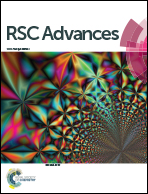Integrated pneumatic micro-pumps for high-throughput droplet-based microfluidics†
Abstract
Droplet-based microfluidic systems have recently emerged as powerful experimental tools in the chemical and biological sciences. In conventional droplet-based microfluidics, controlled droplet generation is normally achieved using precision syringe pumps, where the sample is delivered to the microdevice using external tubing that possesses an appreciable dead volume. Accordingly, there is an unmet need for a droplet generation system that does not require the use of syringe pumps. Herein, we report the integration of pneumatic micro-pumps with droplet-based microfluidic systems and their subsequent use in high-throughput biological experimentation. The efficacy of the system is demonstrated by investigating the interaction and the binding inhibition between angiogenin and the anti-angiogenin antibody with a dissociation constant (KD) value of 9.1 ± 3.5 nM and a half maximal inhibitory concentration (IC50) value of 12.2 ± 2.5 nM, respectively.


 Please wait while we load your content...
Please wait while we load your content...